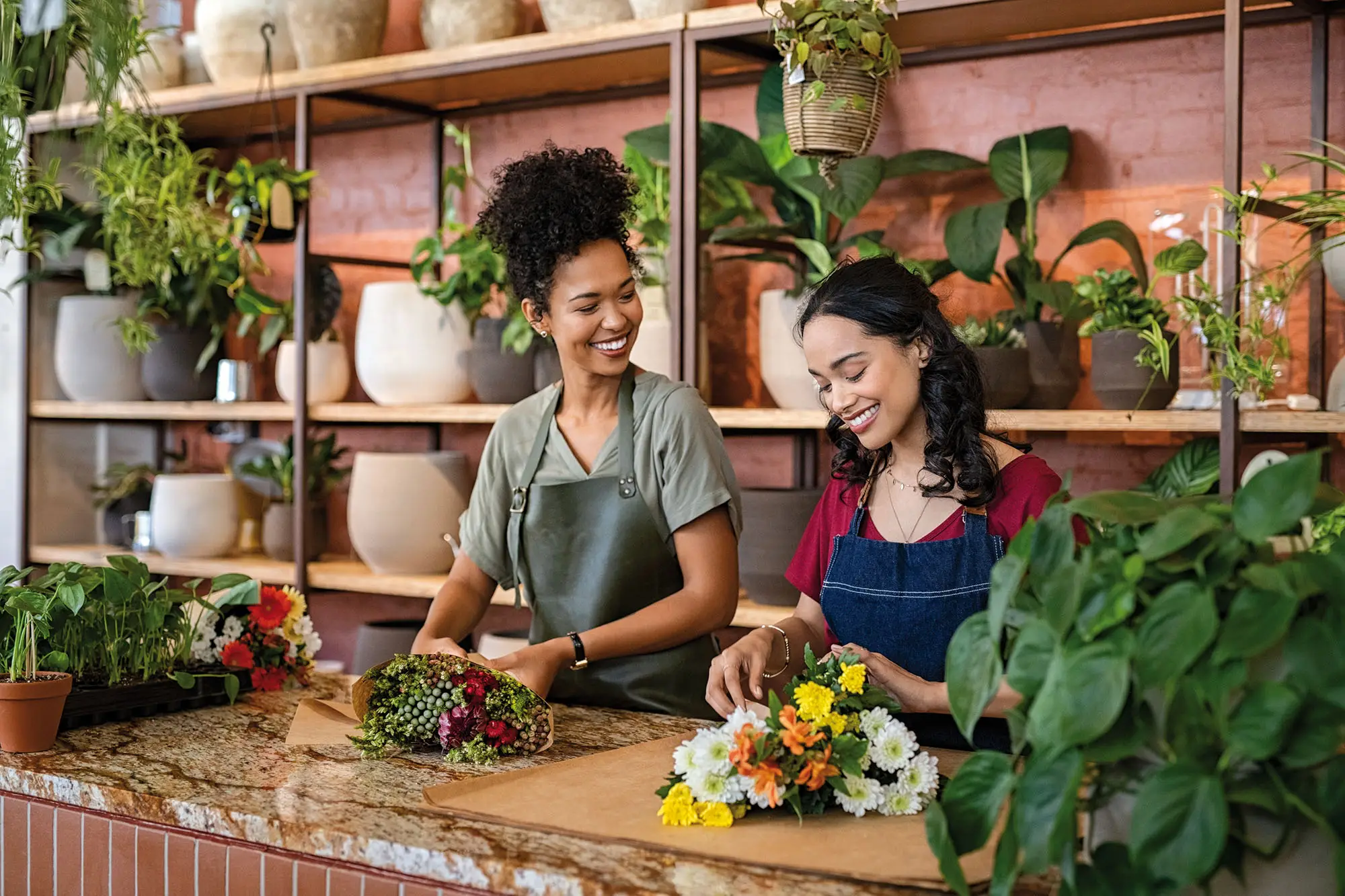How can you, as a florist, make a more sustainable choice? ‘It is great to see that the sector is taking its responsibility, we are working progressively and that is a good development. Growers are fully looking for ways to grow and cultivate more sustainably. The quality marks give the possibility to make a more sustainable choice in this, but that says nothing about the actual emissions. The pot, the substrate, plant or flower itself, what the propagator does, cultivation, transport to auction, to florist, to end user: everything that is consumed in energy or product will have to be calculated for a clear insight into the CO2 footprint. It is a large-scale process, but we still expect that you will soon be able to purchase based on this so-called footprint. This way, as a florist, you can also take your responsibility in a well-founded manner.’
What challenges do florists experience in this? ‘Sustainable choices are often more expensive, which on the one hand is logical, but on the other hand can be a major obstacle. The choices you make within your company, in addition to listening to the customer's demand, are mainly cost-driven, you are, after all, an entrepreneur. And yet florists are increasingly looking at things with a sustainable perspective, often from a gut feeling. After all, you do not always have sufficient information or insight into which choices have the greatest impact on sustainability. Another challenge is that customers in the shop often find it difficult to make sustainable choices, so the demand for sustainable products is not always clear. There are opportunities for clear communication here. Doing things sustainably and implementing them in a good way in your business operations is a challenge, but also an opportunity. Especially when there is more clarity.’
What is the Florist Footprint Tool and how does it help florists? ‘The Florist Footprint Tool is a tool that allows you to zoom in on the footprint of your business operations using quantitative figures. Last year, ten florists started filling in the tool. How do I use my car, do I use grey or green electricity, how do I process my waste, which packaging do I use? The tool gives you insight into these kinds of questions and enables you to calculate and analyse your actual CO2 emissions.’
‘Florists can thus make more targeted and sustainable choices within their business operations. Which buttons can I turn for the greatest environmental benefit? We will have to take steps from the requirements that are already in place. And the legislation will only become stricter, so you will be well prepared. The tool therefore fits in with the developments in the sector. The consumer will make choices for products that have a footprint label via the large parties such as supermarkets, garden centres, home furnishing chains and DIY stores. These large parties are linked to legislation to report on sustainability. And a (voluntary) SME standard will be coming, so you as a florist will have to take steps in the direction of sustainability.’
How big is the sustainability impact that you can make as a florist? ‘If you look at the entire chain, in other words the entire path that a product takes from grower to consumer, then the impact of the florist in terms of CO2 emissions is only 5-10 percent of the entire route. The florist therefore has a limited impact, but we do have the responsibility to take on this small part. Where can the greatest gains be made? We are going to find out now. In addition, we have the responsibility via purchasing to be able to choose sustainable alternatives.’
‘Moreover, we have an important task in our communication with the customer. More and more florists are certified with the Barometer Sustainable Florist, an independent quality mark with which you demonstrate that you are doing business more sustainably. Use that in your communication too. With the footprint tool, you have quantitative figures at hand that you can use to substantiate your sustainability efforts. The consumer thinks sustainability is important, but most find it difficult to make a sustainable choice in the shop. Show it, indicate that you have a bouquet with a low footprint value. Say which sustainable steps you are already taking. The tool helps you to communicate more effectively with your customers. Because the message is also: reap the rewards of your efforts.’
